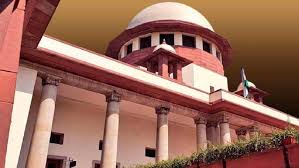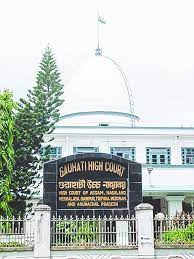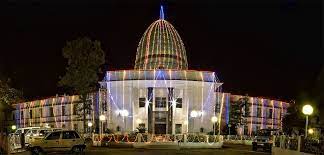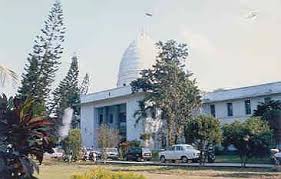The case of the prosecution, in a nutshell, is that a complaint was registered by PW-18 (“complainant”, hereafter) to the effect that on 14th April, 2010, at around 1:30 pm, while the complainant was in her house, four persons rang the doorbell. When her servant, PW-8, answered the door, all four persons armed with a pistol forcefully entered the house. They tied up the hands and legs of the complainant and her servant, threatened to kill them, and proceeded to rob the complainant of silver and gold jewellery, cash, and other valuables by taking the keys to the locker. The accused persons remained at the complainant’s residence till 2:30 pm before fleeing. Based on the complaint, an F.I.R. was registered at around 4:30 pm against four unknown persons under Section 394, IPC and all of them were subsequently arrested. (Para 4)
In convicting Manoj, the Trial Court primarily relied on two pieces of evidence: the Seizure Memos, which were prepared upon recovery of the stolen articles from Manoj’s possession, and the Identification Memo, in which the complainant identified the articles stolen. The Trial Court drew presumption under Section 114 of the Indian Evidence Act, 1872 (“Evidence Act”, hereafter), to the extent it provides that “a man who is in possession of stolen goods soon after the theft is either the thief or has received the goods knowing them to be stolen unless he can account for his possession”. According to the Trial Court, the crucial corroborative evidence in Manoj’s case was the fact that the articles found in his possession belonged to the complainant and were accurately identified by her. Additionally, Manoj failed to provide any explanation regarding how the stolen articles came into his possession. These collective factors resulted in his conviction under Section 411, IPC. (Para 9)
Insofar as Kallu is concerned, the Trial Court primarily based his conviction for criminal conspiracy on two key factors: first, the information provided by co-accused Jaihind during interrogation in his memorandum statement dated 12th May, 2010, stating that he had given Rs.3,000.00 to Kallu from the stolen money and had kept one country-made pistol along with three cartridges at his (Kallu) house/tapra; and secondly, during interrogation, Kallu himself in his memorandum statement admitted to keeping Rs.3,000.00 in his room’s cupboard, which was subsequently seized upon his disclosure. Having held that Kallu had conspired with the other coaccused, the Trial Court convicted him of criminal conspiracy punishable under Section 120-B, IPC. (Para 10)
There can be no two opinions that the quality of evidence led by the prosecution in the present case to nail Manoj and Kallu was wholly untrustworthy for convicting them and the Trial Court as well as the High Court erred in not acquitting them. (Para 19)
It is clear as crystal that the sole connecting evidence against Manoj and Kallu was the recovery based on their disclosure statements, along with those of the other co-accused but this evidence, in our opinion, is not sufficient to qualify as “fact … discovered” within the meaning of Section 27. Having regard to such nature of evidence, we view the same as wholly untrustworthy. Statements under Section 313, Cr.PC (Para 30)
Upon reading the questions put to Manoj under Section 313, Cr.PC, it becomes evident that the Trial Court treated this process as an empty formality. None of the material circumstances forming the basis of his conviction were put to him. Astonishingly, not even a single question regarding the stolen articles was posed to him. Instead, irrelevant and abstract questions about the main incident of robbery that took place on 14th April, 2010 were asked, even though his alleged involvement occurred much later when the robbed items were allegedly sold to him by the co18 accused. The prosecution’s entire case is premised on the disclosure statements made by the co-accused, but Manoj was never given the opportunity to explain the circumstances. Conviction of Manoj under Section 411, IPC (Para 32)
At this juncture, even if we assume the veracity of the claim that the items sold to Manoj were indeed stolen articles, it would not be sufficient to attract Section 411, IPC; what was further necessary to be proved is continued retention of such articles with a dishonest intent and knowledge or belief that the items were stolen. No evidence worthy of consideration was adduced by the prosecution to prove that Manoj had retained the articles either with dishonest intent and with knowledge or belief of the same being stolen property. (Para 37)
It logically follows that one person alone can never be held guilty of criminal conspiracy because one cannot conspire with oneself. (Para 38)
Against this background, to say that the convictions of Manoj and Kallu can still sustain, appears far-fetched; their convictions cannot be justified solely on the basis of illusory knowledge regarding their involvement in the crime. (Para 43)
SUPREME COURT OF INDIA
2023 STPL(Web) 167 SC
[2023 INSC 705]
Manoj Kumar Soni Vs. State Of Madhya Pradesh
Criminal Appeal No.1030 of 2023 With Criminal Appeal No.1458 of 2023-Decided on 11-8-2023
https://stpllaw.in/wp-content/uploads/2023/08/2023-STPLWeb-167-SC.pdf







